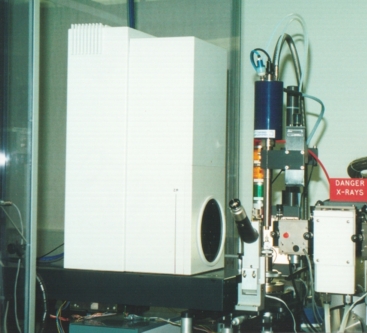

Reinventing the MAR180 camera
(due to) A van Donkelaar and R Downes, CSIRO Health Sciences
SYNOPSIS: Simple modifications greatly enhance the utility of the MAR180 image-plate diffraction camera system
Although now an older image-plate diffraction camera system, the MAR180 camera demonstrates excellent signal-to-noise characteristics comparable to current camera systems due to its well-designed laser optics and photomultiplier electronics. The integral slit assembly and horizontal oscillation stage are an unfortunate drawback when used with current optics and coldstreams, and the system exhibits a considerable lateral wobble when the image plate commences spinning during scanning. These problems can readily rectified with little effort due to the modular design of the camera to yield a valuable addition to any protein diffraction lab with a spare port, or a worthwhile retrofit where the system may otherwise be considered redundant.
Procedure: Disassemble and remove the tilt-frame supporting the camera platform. This consists of a lower tripod frame, hinged at the slit assembly onto an upper frame carring the camera platform. Replace this with a simple and robust four-post support which extends outward laterally under the camera platform to cover a larger footprint then the original frame. Include cross-bracing for added rigidity.
Remove the slit assembly and oscillation stage. Wiring to the shutter solenoid, which is integral to the slit assembly, should be routed to the external shutter control of the X-ray generator via a simple optoisolator circuit. The slit assembly can then be discarded and the oscillation stage mounted vertically on a separate platform, thus isolating it from any vibration disturbance and simplifying its positioning with respect to the beam position. A specimen telescope or camera and vertical coldstream complete the transformation.
 |
 |
Converted MAR180 camera with PX50 optics (early-type housing) |
Detail view of oscillation stage |
(c) Copyright AXCO 2004